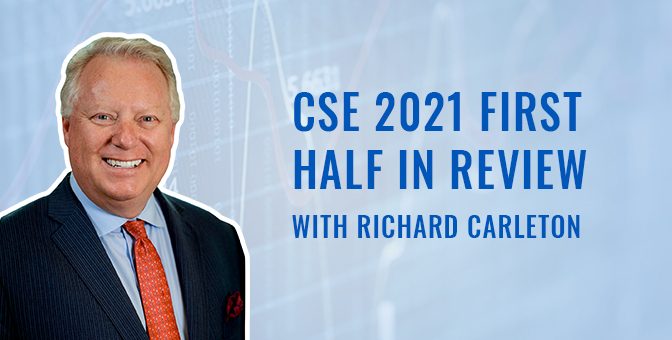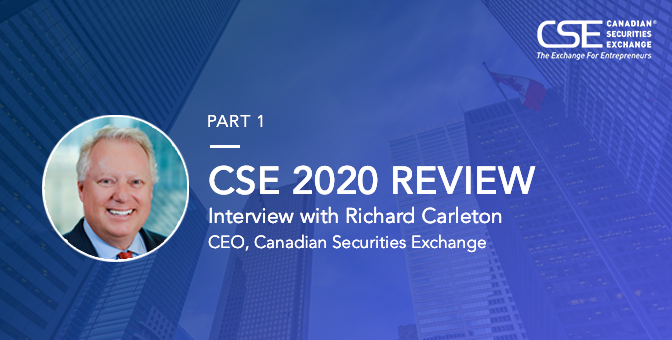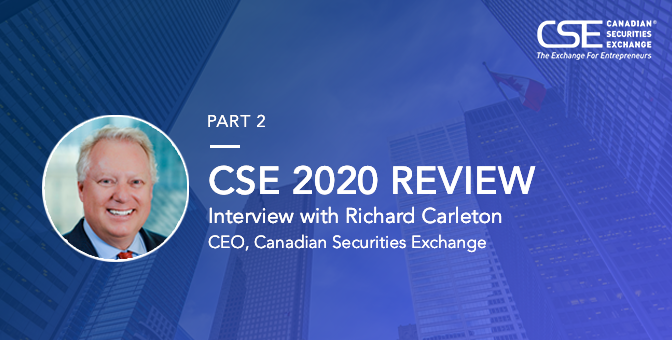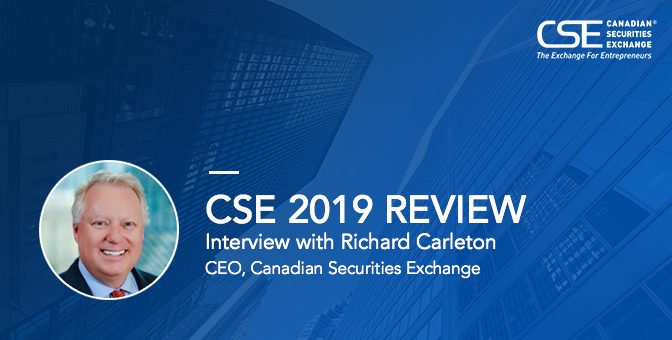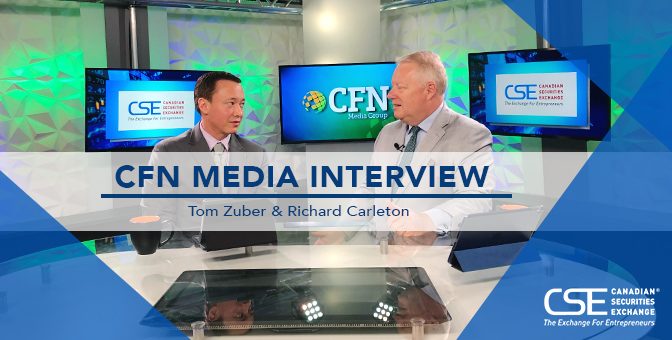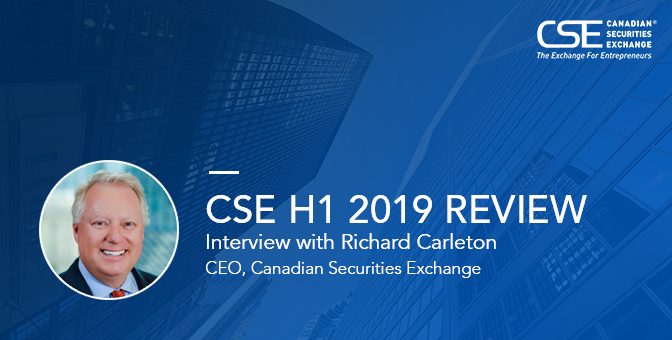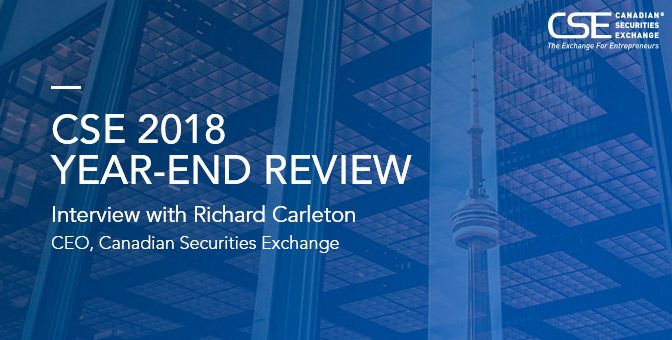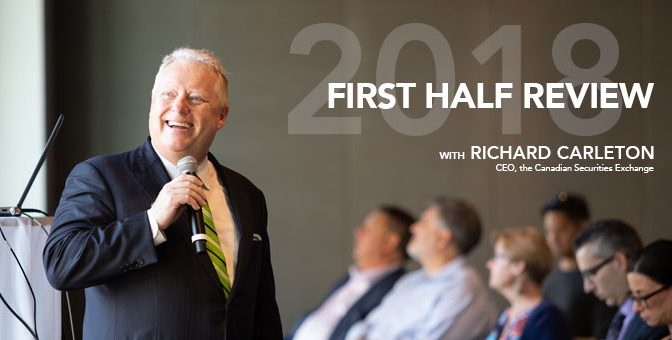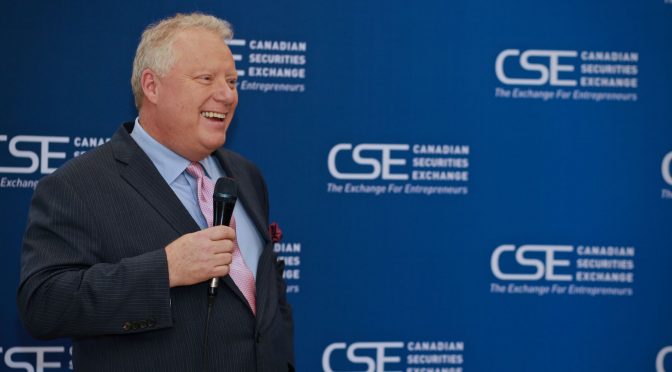Stock markets around the world continued to enjoy high levels of investor participation and buoyant prices in the first half of 2021. How happy are you with the first six months of the year, and what were some of the highlights in terms of issuer accomplishments and milestones achieved by the CSE team?
We are delighted with what we have experienced in the first six months of 2021. First and foremost, the CSE team continues to perform at a very high level, notwithstanding the ongoing impact of the pandemic on day-to-day operations at our offices in Vancouver and Toronto, plus our team members in Calgary, Montreal and elsewhere.
What I’m particularly proud of is just how well the team has pulled together and continued to maintain a high level of service for the trading, listing and market data operations of the exchange.
One noteworthy trend we are seeing is a steady rise in retail trading activity. The first quarter of 2021 brought record levels of turnover for the CSE, and indeed for the broader Canadian public equities market. This is also the case throughout North America, and there has been a particular focus on smaller capitalization stocks. Things calmed down somewhat from April but we are operating well ahead of our targets for the year.
Speaking with my colleagues, and particularly those in the discount brokerage industry, there has been a significant demographic shift in who is opening brokerage accounts these days. In Canada, a record number of new accounts were opened last year, and they tended to be opened by people in the 20 to 40 demographic, many of whom were investing in the stock market for the first time.
Like their parents, they buy bank stocks and other large-cap Canadian and US equities. But they’re also interested in sectors where the CSE is particularly strong – cannabis, psychedelics, e-gaming, blockchain and cryptocurrency-related securities, as well as health tech, which obviously is an industry sector that has been in focus. And, of course, the mining industry, whether it’s precious metals exploration companies, because of the strength in gold and silver, or the “green” metals, such as copper, with the continued electrification of economies around the world. We’ve welcomed many new companies to the Canadian Securities Exchange over the last five years in all of these categories.
One of the other important developments is a significant rebound in valuations for US cannabis companies listed on the Canadian Securities Exchange. That has two principal outcomes for us. One is that existing issuers have been successful in raising additional capital. In January, we saw a record amount of capital raised by our issuers, totaling well over $1 billion. The majority of that was cannabis issuers raising money to fund acquisitions or expand operations organically, as more and more US states legalize cannabis for medical and recreational purposes.
The other is that we saw a number of cannabis companies come to the CSE that had opted to remain private until they saw this rebound in valuations. We’ve had some very meaningful companies join the exchange in the last little while from the United States.
As you just highlighted, it is not uncommon for CSE issuers to collectively raise $1 billion or more in a single month. What new financing developments or trends are you seeing at the moment? Are there any industry sectors, capital sources or modes of financing that stand out?
I just touched on some of these, but one of the trends we saw beginning to build in 2020, which has reinforced itself in 2021, is a lot more prospectuses being filed than before. Instead of going public by way of a fundamental business change or a reverse takeover, we are increasingly seeing the traditional IPO selected as the preferred means. That’s a positive trend because companies come to market with what tends to be better distribution of their securities, a larger shareholder base, and a shareholder base that is actually invested in that specific story. Post-listing price performance also tends to be a little better than for companies that come to market by way of RTO.
Similarly, existing issuers are raising large amounts of new capital, and instead of being done by way of private placement – although the private placement is still an important means of sourcing funds – we are seeing issuers file shelf prospectuses to facilitate broader distribution for their transactions. That is a very positive development because when shares are qualified under a prospectus, they are free trading immediately, and that tends to enhance the liquidity profile of the company.
Work to establish a senior market tier for larger issuers is moving forward. What is the status in terms of steps left and an approximate timeline? Also, what benefits will the senior tier bring for issuers on the CSE?
This project has been progressing for a while and involves not only creation of a senior tier but also the first significant rewrite of the rulebook for the CSE’s small-cap issuers. We’ve been working for a number of months with our regulators in British Columbia and Ontario on the provisions and are close to publishing our proposals for public comment. The comment period will likely last for 45 days and we’ll be seeking input from interested individuals, law firms, accounting firms, investment banks and, of course, our issuers. We look forward to having these new provisions in place ideally at some point in the fall.
With regard to benefits for the companies in the senior tier, there are a number of them. I’ve spoken in the past about eligibility for margin relief under IIROC rules. It will be up to each dealer to decide if they will recognize margin eligibility for a particular security on the basis of price history and volatility.
It also influences dealer capital structure, because dealers who have securities in inventory that aren’t margin-eligible have to maintain a capital reserve against them that’s one hundred cents on the dollar. They get relief from that requirement if the securities are margin-eligible; that reduces the cost of financing during a bought deal, for example.
We’ll be working with the index providers to ensure that companies are eligible for inclusion in Canadian and US indices by providers such as MSCI and FTSE. And we’ll be looking at rules around eligibility for individual stock options. A number of companies in the senior tier would meet the Canadian Derivatives Clearing Corporation minimum standards – exceed them by a good measure, in fact – for market capitalization and liquidity to have single-stock options trade in relation to their shares. That has the potential to improve liquidity in the cash market, and again is just part of the growth of the Canadian Securities Exchange and the companies listed with us.
What will the benefits of a CSE senior tier be for investors?
For investors, what we hope ultimately to see is the opportunity for lower costs. We are building toward a time when people will be able to have these stocks in a margin account, though, as I say, it is up to each individual investment dealer as to whether they will permit that or not. But at least it will create that possibility.
We also think a senior tier can attract additional institutional investors so that CSE issuers see even better liquidity, broader interest and more analyst coverage. It really is us moving forward alongside our issuers.
The CSE welcomed some new members to its board of directors in the second half of 2020, and you’ve added to other parts of the team as well. Is there anything new from a policies or capabilities perspective you’d like to highlight?
Our work continues on delivery of a full lifecycle of services for tokenized securities and to this end we’ve made a series of investments and established a variety of partnerships. We’ve had very productive meetings with regulators recently which give me a high degree of optimism that we are on the right track.
To recount the specific benefits, it is really a situation where everyone has the chance to win. We look to make a significant dent in clearing costs for investment dealers. For investors, we look to bring new categories of asset classes into the public market as investments, and in particular we think a number of these could be income-producing investments.
Most importantly for issuers, we believe we can reduce their cost of capital. I’ve spoken in the past about the opportunity to have mining royalties brought to a public market, which has the potential to dramatically cut the cost of capital for an issuer. It’s an alternative to entering into private equity arrangements with one of the handful of institutions around the world that provides that kind of financing.
We are also very much looking at our market structure, which you can think of as the plumbing for our equity trading system, with particular importance on the need of dealers to cut their cost of managing buy and sell orders for CSE listed companies.
The explosion of activity and support we’ve had for our market in the latter part of 2020 and into 2021 has had a meaningful impact on the operations and cost structure of a number of discount brokers. For example, you will see very shortly that we are making progress with Wealthsimple in adding securities to their commission-free program. This is something we have had to work on quite carefully with Wealthsimple to ensure they can do this on a cost-effective basis. There is a lot going on and the team is going to be very busy throughout the rest of the year.
The CSE undertook some major awareness initiatives in the first half of 2021. The Cannabis Investor Series was broadcast each week during the month of May and followed successful multipart series on health tech and plant proteins. Talk about the benefits and what comes next.
It’s really two-fold. The first is that we obviously want to be seen as a trusted source of information for investors in particular market segments. And because of the relationships we have with thought leaders and entrepreneurs, we have the opportunity to pull together some very compelling content and fill investor needs for more information about these particular industry sectors.
The other side of these series is developing closer working relationships with the executive management teams of the issuers and prospective issuers and thought leaders in different industries. There is no substitute for a personal relationship when you are looking to overcome hurdles and build more business or attract additional listings, and the same goes for further establishing the reputation of the Canadian Securities Exchange as a trusted provider of listing services to the entrepreneurial community.
It is great to have an opportunity to provide that education and more information for investors, but we also enjoy the opportunity to work very closely with existing issuers and potential issuers.
Continuing to build the roster of issuers from overseas and make foreign capital aware of CSE companies is important for your team. Talk about related plans, and why companies outside of Canada should consider a CSE listing.
We’ve all been working from home for a year and a half but when we are finally able to travel again we will do so extensively. In the meantime, we have been leveraging various communications technologies to work with different industries in different parts of the world.
Clearly, in the cannabis space we carved out a great reputation – first by working with the industry in Canada, and then to share in the growth of the industry in the United States. And because of that we attracted entrepreneurs from Israel, from South America, from Asia, from Europe, and it has cemented our reputation as the go-to place for entrepreneurial capital for the cannabis industry globally.
Because many of the issuers were backed by funds that are also prepared, for example, to look at investments in the psychedelics space, we are seeing companies in new sectors come to the CSE from beyond Canada and the United States looking to source Canadian public capital.
I’d also highlight the renewed interest in mining. Mining was our largest source of new issuers in 2020 and that trend has continued into 2021. It is one of the strongest, if not the strongest, individual sectors for us in terms of new listings. Interestingly, we are seeing a lot of interest from Australia. The Australian mining industry has a tradition of raising some of its capital in Canada, though historically it’s a bit more aligned with the capital markets in London.
What we are seeing now is junior exploration companies from Australia more seriously considering Canada as a potential source of capital, in part because the Canadian capital markets are well equipped to service exploration companies of all kinds. As a Canadian reporting issuer you also have access to the United States through various prospectus exemptions that are hard-coded into the Securities Act in the US, as well as the opportunity to build a US shareholder base and US liquidity, that may include a quotation with the OTC Markets Group.
When we talk to issuers from outside of Canada who are looking at Canadian markets, the key thing is the expertise of the entire ecosystem for early-stage companies. The CSE facilitates access to those markets in Canada but also the ability to bring in investors from the United States and beyond. It really is a very powerful proposition compared with private equity alternatives or go-public transactions in countries where costs may be high and asset valuation and liquidity may not meet the requirements of the entrepreneurs.
With vaccination rates climbing quickly in Canada and provinces relaxing restrictions, what planning is the CSE doing to align with the shift back to more “normal” living conditions?
It will be a staged effort. We are headquartered in Ontario and it has only been in the last few weeks that we have come out of hard lockdown, but serious restrictions on office occupancy remain. We are going to maintain the work-from-home situation in British Columbia and Ontario for the remainder of the summer. As September approaches, we’ll have a look and see where things are with the local regulations and our own staff and the level of comfort with returning to the office.
I think some of us who are fully vaccinated are likely to get back out on the road over the course of the summer and begin meeting with people on a face-to-face basis, even if it’s just on a comfortable patio somewhere. And we’d certainly like to get back to the United States, as there is lots for us to do in that market. We’ll obviously have to take it one step at a time as we see what governments have in store for us regarding border re-openings, interprovincial travel and other restrictions. We’re paying very close attention to everything and considering our best path forward.

